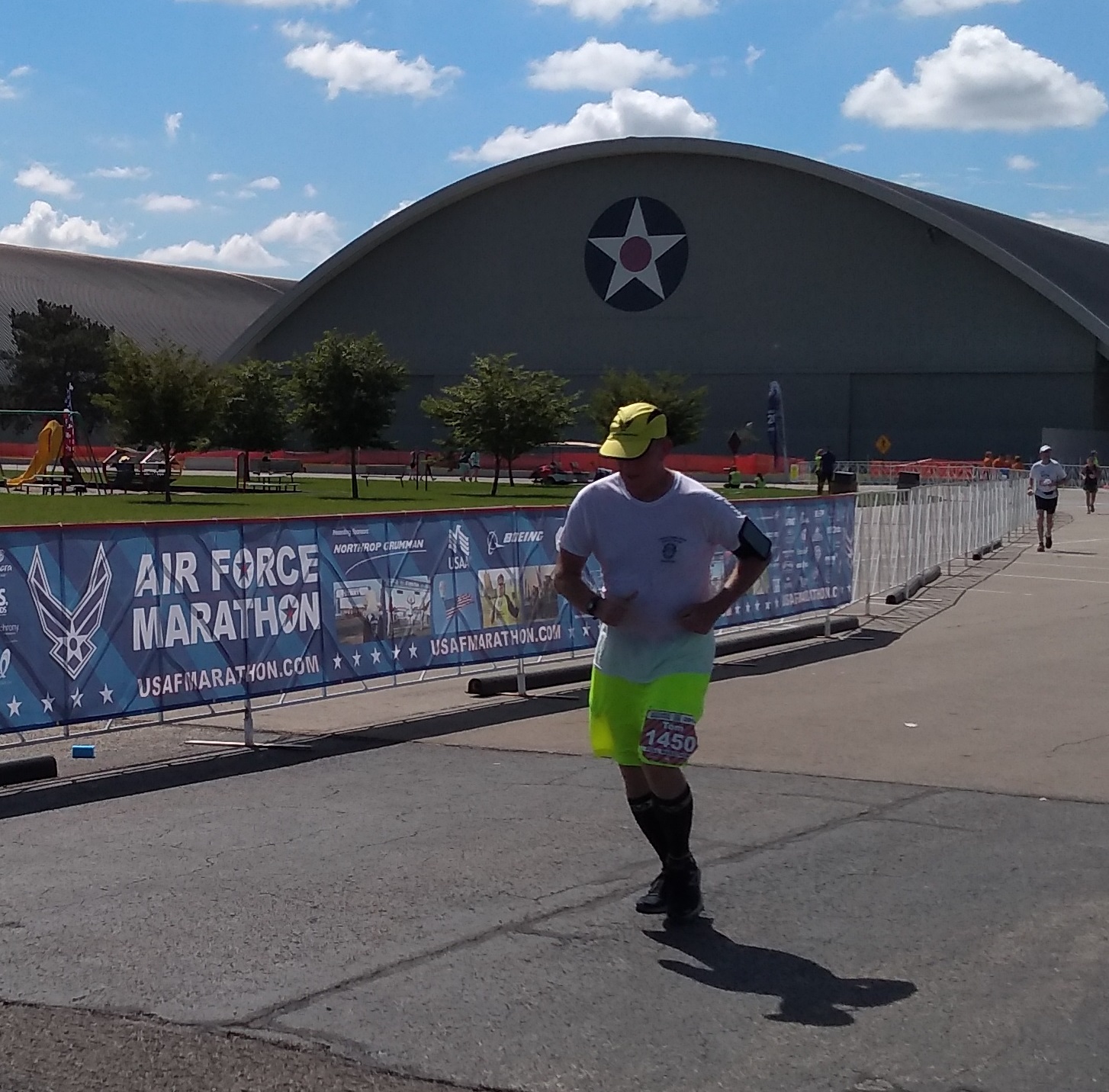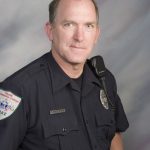Running Towards a Closing Gate
United States Air Force Marathon
By Officer Tom McMurtry CPT (RET) US Army Special Forces
*This is an article from the Winter 2022/2023 issue of Combat Stress
I saw what they were doing but it made no sense.
200 yards ahead uniformed men were pulling chain link fences on wheels
across the four-lane entrance to the base.
What was going on? Was there a change in the marathon route?
150 yards ahead the left side was closed while
several Air Force buses began arriving.
Four hours ago, we were a single mass of ten thousand runners.
Now a string of individuals miles long.
I was in the last third with six miles and
100 yards to go.
A Sergeant stepped into the road and held up a hand.
Everybody on the bus. The racecourse is closed.
Too many heat casualties and not enough transports.
50 yards to go.
It was hot. We had been running on asphalt without shade for miles.
MedEvacs had been picking up runners for hours, so I understood.
Deeply disappointed after months of training,
I slowed and turned toward the buses.
Then I saw them.
30 yards to go.
Runners were still going through the narrowing entrance.
I picked up my pace.
25 yards to go.
I passed the busses and the Sergeant trying to get my attention.
20 yards to go.
The lanes were closed leaving only a gap by the guardhouse.
15 yards to go.
The last two runners in front of me made in through.
10 yards to go.
I started pumping my arms to give the impression of sprinting.
5 yards to go.
I yelled “One more!”
The Airman pulling on the leading edge looked up and paused.
I slid behind him, brushing against him ever so slightly.
The gate was closed.
I was still running.

ABOUT THE AUTHOR

Tom McMurtry, DAIS, Police Officer (RET) CPT, U.S. Army, Special Forces (RET)
Tom has spent most of his adult life serving others. He joined the U.S. Army at the age of nineteen, and volunteered for and completed Infantry, Airborne, and Special Forces training. After three years of serving on a Special Forces HALO Team Tom became a Reservist. He remained in the Special Operations Reserve for twenty more years. He was recalled to active duty for the invasion of Iraq as a Psychological Operations Specialist, during which he was awarded the Bronze Star Medal. After his combat tour Tom returned home and entered the police academy at age 49. He served as a patrol officer for 15 years and received the Distinguished Action Award for his response on the night of the Dayton mass shooting in the Oregon District. Tom retired at the age of 65 but was recalled to part-time duty by his department at the height of the pandemic to help cover for fellow officers who were sick. All of that aside, Tom will tell you that he takes the greatest pride in his 45-year marriage to his wife, Holly, along with their five children and ten grandchildren.
Combat Stress Magazine
Combat Stress magazine is written with our military Service Members, Veterans, first responders, and their families in mind. We want all of our members and guests to find contentment in their lives by learning about stress management and finding what works best for each of them. Stress is unavoidable and comes in many shapes and sizes. It can even be considered a part of who we are. Being in a state of peaceful happiness may seem like a lofty goal but harnessing your stress in a positive way makes it obtainable. Serving in the military or being a police officer, firefighter or paramedic brings unique challenges and some extraordinarily bad days. The American Institute of Stress is dedicated to helping you, our Heroes and their families, cope with and heal your mind and body from the stress associated with your careers and sacrifices.

Leave A Comment
You must be logged in to post a comment.